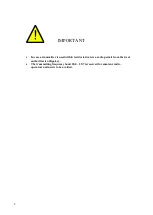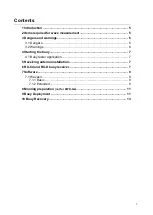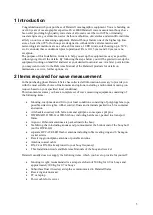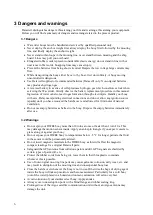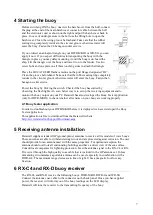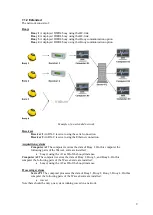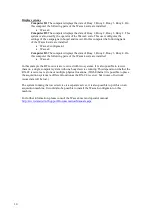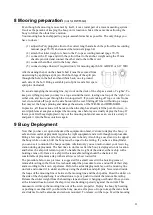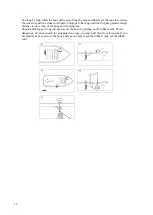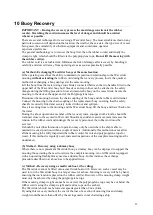
5
1 Introduction
Congratulations with your purchase of Datawell oceanographic equipment. You are building on
over 40 years of oceanographic expertise. Over 4000 Datawell wave measurement buoys have
been sold, providing high quality wave data of all oceans over the world. The oil industry,
coastal engineers, governments, navies, harbour authorities, universities and scientific institutes
all rely on our wave measuring equipment. Datawell buoys feature one of the highest up time
scores, better than 99%. Our buoys are designed to withstand the extreme marine and
meteorological conditions at sea, such as 40 m waves, 12 Bft winds, solar heating up to 50 ºC,
etc. Even under these conditions typical operational life is 10-15 years and 20 years are no
exception.
The purpose of this Installation Guide is to help you set up the equipment as easy as possible,
without going into all the details. By following the steps below you will be guided to set-up the
equipment working on land first and later at your desired location at sea. At a later point in time
you may want to refer to the Reference Manual of the Datawell products for details on
maintenance, service, further options, etc.
2 Items required for wave measurement
In the purchasing phase Datawell Sales has collected all information necessary to provide you
with the most suitable choice of instruments and options, including a tailor-made mooring (on
request, based on your specified local conditions).
This document assumes you have a complete set of wave measuring equipment, consisting of
the following items:
•
Mooring, ready-made and fit to your local conditions, consisting of polypropylene rope,
possible sinker weights, rubber cord(s), floats and terminals packed in a blue container
and carton
•
All shackles needed, with bolts, nuts and split pins, some spare split pins
•
DWR-MkIII, DWR-G or WR-SG buoy including hatchcover, packed in a transport
frame
•
Argos or Orbcomm antennae are packed inside the buoy.
•
Stabilizing chain including anodes and pre-mounted at the bottom end of the buoy hull
(not for DWR-G4)
•
separate HF/CAT4/LED flasher antenna including rubber sealing ring and 6 `hexagon
socket screws
•
Receiving ground-plane antenna or portable antenna
•
Antenna coaxial cable
•
RX-C4 or RX-D (already tuned to your buoy frequency)
•
This Installation Guide and Reference Manuals of the buoy and receiver
Datawell usually does not supply the following items, which you have to provide for yourself:
•
Mooring weight; recommended is a scrap steel chain of 500 Kg for 0.9 m buoys and
approximately 300 Kg for 0.7 m buoys
•
Subsurface float if needed, at depth as communicated to Datawell Sales
•
Receiving antenna mast
•
PC or laptop
•
Power cable for receiver
Summary of Contents for Waverider DWR-MkIII
Page 4: ...4...


